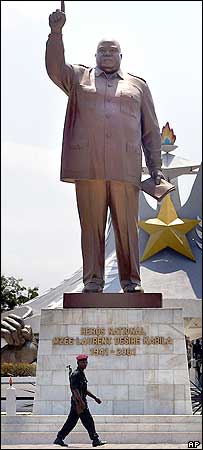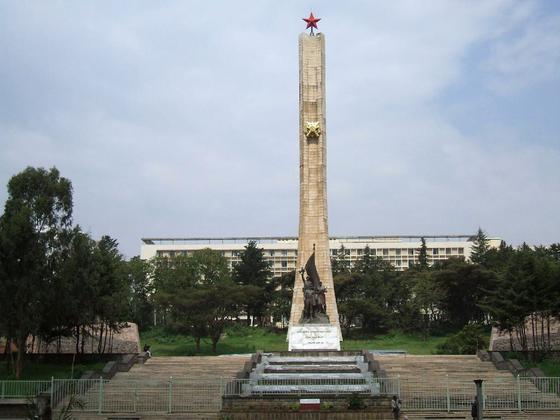Institute for Far Eastern Studies (IFES)
ICNK Forum No. 09-2-2-1
2/2/2009
ASSESSMENT OF THE NORTH KOREAN ECONOMY FOR 2008
In the 2008 North Korean New Year’s Joint Editorial, Pyongyang established the year 2012 as “The Year of the Perfect Strong and Prosperous Nation,” while labeling 2008, “The Year of Turnabout,” and, “The Year of the Betterment of the Livelihoods of the People.” As the year marked the 60th anniversary of the establishment of the Democratic People’s Republic of Korea (DPRK), the regime projected a highly motivated façade, but there was no sign of new changes in the North’s economic policies.
Faced with the inability to produce any substantial results in the realm of international economic cooperation, North Korean authorities focused on how to put a positive spin on international conditions that were tied to the progress of 6-Party Talks. However, no visible measures appeared to emerge. Internally, North Korea’s chronic supply shortages drove further disparities between official and market pricing and monetary exchange rates as authorities were unable to stabilize the domestic economy. The growing global economic instability also caused economic policy makers to act more conservatively.
In 2008, North Korea’s food production in 2008 amounted to 4.31 million tons, recording a 7.5 percent increase over the previous year, while energy production is estimated to have grown by approximately 10 percent. Through joint development projects for North Korea’s underground resources, the North received raw materials for light industries (soap and shoes) amounting to 70 million USD in 2007, and 10 million last year. In addition, DPRK-PRC trade and inter-Korean economic cooperation both grew (DPRK-PRC trade increased significantly, while North-South cooperation grew only slightly), but it is difficult to measure the extent to which these increases impacted the North’s economy.
It appears that overall, North Korean trade and industry has improved since 2007, and the 2008 economic growth rate was positive. However, when estimating the North’s economic growth rate in light of the quickly rising exchange rate for South Korean won, DPRK economic growth for 2008 could be seen as a negative value.
While North Korea’s overall industrial production grew in 2008, when compared to previous years, and the primary reason for such was the refurbishment of equipment in most stable industries, development assistance and heavy oil aid as part of the 6-Party Talks, the provision of raw materials for light industries by South Korea, and the rise in prices on goods internationally.
Because of favorable weather conditions and increased production of fertilizer in the North, the agricultural sector showed a relative increase in production in 2008, despite the suspension of fertilizer aid from South Korea. Grain production was up 300 thousand tons, for an estimated total of 4.31 million tons last year. Boosted energy production was helped by improvements in hydroelectrical production and heavy oil tied to 6-Party Talks, and the provision of parts and materials for power plants, which considerably increased power production, at least in the first half of the year. This played an important role in the increase in industrial operations, as well. As electrical supply is the biggest obstacle to raising the operating rate of production facilities, more power resulted in overall production increases.
The construction sector has focused efforts on Pyongyang, and in particular on efforts to improve the lifestyles of its residents. Housing (averaging 20,000 family dwellings per year), restaurants, waterworks, roads, and other construction and repair projects have been aggressively undertaken.
North Korean authorities emphasized the science and technology sector in 2008, although it appears that the actual impact of this campaign topped out at the supply of some practical technology and the at production facilities, power plants, and other factories, and the promotion of modernization and normalization of industrial production.
At the mid-point of 2008, inter-Korean trade had grown by 1.2 percent compared to the same period the year prior, reaching 1.82 billion USD. The freeze on the annual supply of 400 thousand tons of rice and between 300~350 thousand tons of fertilizer from the South had a negative impact on the North’s food situation. On the other hand, DPRK-PRC trade from January-November 2008 jumped by 29.3 percent over the same period in 2007, considerably more than the 14.9 percent recorded in 2005, the 14.9 percent seen in 2006 and the 16.1 percent rise last year.
The increase natural resource development and improvements in core industries, the possibility of expansion of markets, and the advantage of low-cost labor give China, Russia, and other adjacent countries positive perceptions regarding investment in the North, and as Pyongyang continued to expand economic cooperation with these countries last year, it also improved economic relations with Europe as well as Egypt and other Middle Eastern countries.
PROSPECTS FOR THE NORTH KOREAN ECONOMY IN 2009
If one looks at North Korea’s domestic economic policies, one will see that basically, in the 2009 New Year’s Joint Editorial, North Korea’s domestic and international economic policies have not undergone any significant changes. However, in order to accomplish the goal of establishing a Strong and Prosperous Country by 2012, it is expected that all efforts will be poured into reviving the economy. Based on the Joint Editorial, this year, the North’s economic policy is not one of reform due to transformation of the outside environment, but rather a revival of pas, conservatively grounded economic policy. Regarding international economic relations, the 2008 Joint Editorial specifically stressed the building of an economically strong nation based on the principle of the development of external economic relations, but there was no particular reference to this in 2009.
In 2009, resolution of agricultural problems was again prioritized as the task most necessary for the realization of a Strong and Prosperous Nation by 2012. Along with this, the North’s economic policy for 2009 will prioritize the modernization and normalization of the economy’s ‘vanguard sector’, and it is expected to continue to strengthen efforts to revive the economy. As it continues to work toward creating an environment in which it can concentrate efforts on the building of an ‘Economically Strong Nation’, North Korean authorities are expected to issue new measures to strengthen the economic management system, including the planned industrial system, the distribution and circulation framework, and an effective market management system. The North is also expected to further emphasize efforts to modernize the People’s Economy, as it considers modern vanguard science and technology to be the answer to recovery from its current economic crisis.
There is a possibility North Korea’s foreign trade, including that with China, will shrink in the future, as its external economic activity is hit by the current international economic situation and the rising value of the U.S. dollar and Chinese Yuan. Just as was seen in 2008, with the shrinking growth of the Chinese economy, DPRK-PRC trade will be hit negatively. Progress on the rail link being promoted between Rajin and Hasan, as well as the redevelopment of the Rajin Harbor is also expected to face difficulties. This is likely to lead to further efforts by the North to expand economic cooperation with the EU and Middle Eastern countries.
Despite North Korea’s removal from the U.S. list of terrorism-sponsoring states, because sanctions against North Korea still remain, the North will need to make progress in non-proliferation, human rights improvement, and marketization in order to see real economic benefits from improved relations with the Obama administration. However, because of a lack of confidence regarding market reform, differing stances between the U.S. and DPRK on denuclearization, and deeply rooted mistrust, there is a more than a small chance that progress on the nuclear issue will be stretched out over the long term.
Looking at prospects for the main domestic economic sectors of North Korea, firstly, the amount of development in the energy and mining sectors could take a favorable turn if there is movement on the nuclear issue, and this would have an overall positive effect on the entire industrial sector. The drop-off of demand due to the international financial crisis could have a considerable impact on the North’s mining sector, making it difficult to see much growth past the levels seen in 2008.
In 2009, the supply-demand situation regarding North Korean grains is expected to improve over last year. North Korea requires 5.2 million tons of grain, and is expected to harvest 4.9~5 million tons, falling only 200~300 thousand tons short. This is an improvement over the 790 thousand ton shortfall the North suffered in 2008. However, the actual amount of grains distributed to the people may not increase, because some of the 2008 shortage was relieved through the release of emergency rice reserves, and so some portion of the 2009 harvest will need to be set aside to restock that emergency reserve.
In the manufacturing sector, the increase in electrical production and increase in large-scale equipment operations in metalworks, chemicals, construction materials, and other heavy industries, the supply of materials for light industries as well as fertilizer will be extended, but the reduction of inter-Korean economic cooperation and foreign capital will mean a reduction in the ability to import equipment and materials, making it difficult to meet 2008-level growth in industrial production numbers.
In the construction sector, housing construction in Pyongyang and other areas will not fall off suddenly, but with the anniversary of the founding of the Party Museum upcoming and the impact of the furious construction activity that has been underway, it is likely to slow down in 2009. With North Korean authorities restricting private-sector economic activity, controlling the size of markets, and other measures controlling commerce in the North are expected to strengthen, which will considerably restrict anti-socialist commercial activity. To what extent official commerce networks will absorb this activity will be pivotal.
Trade between North Korea and China is expected to shrink as the global economic crisis drives down the price of raw materials that the North exports to the PRC. Following the North Korean authorities’ enforcement of a measure reducing inter-Korean economic cooperation on December 1, 2008, without improvement in the North Korean nuclear issue, and in U.S.-DPRK relations cooperation between Seoul and Pyongyang will gradually shrivel. Trade with other countries is also expected to fall as a result of the current global economic situation. Therefore, reduction of inter-Korean economic cooperation, North Korea’s principle provider of foreign capital, and sluggish trade between Beijing and Pyongyang will weaken the North’s foreign reserves supply-and-demand situation.
As for the investment sector, if North Korea is to succeed in its push to build a Strong and Prosperous Nation by 2012, it must attract foreign investment through aggressive policies of opening its economy. In order to improve the investment environment, Pyongyang must work more aggressively to resolve the North Korean nuclear issue, but despite the demands of the surrounding countries, it is likely North Korea will insist on recognition as a nuclear power, making it difficult to expect progress on this front. Therefore, foreign investors’ interest in North Korean markets, and North Korea’s assention into international financial institutions through improved relations with the United States, appears to be a long way off.


